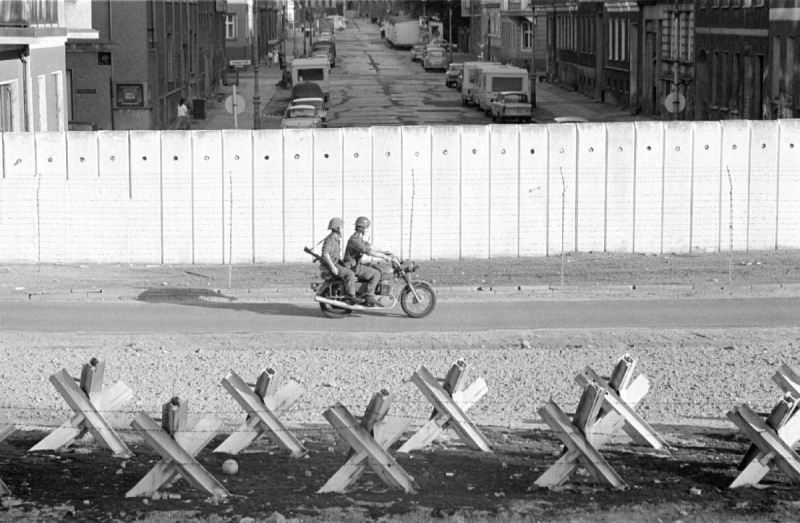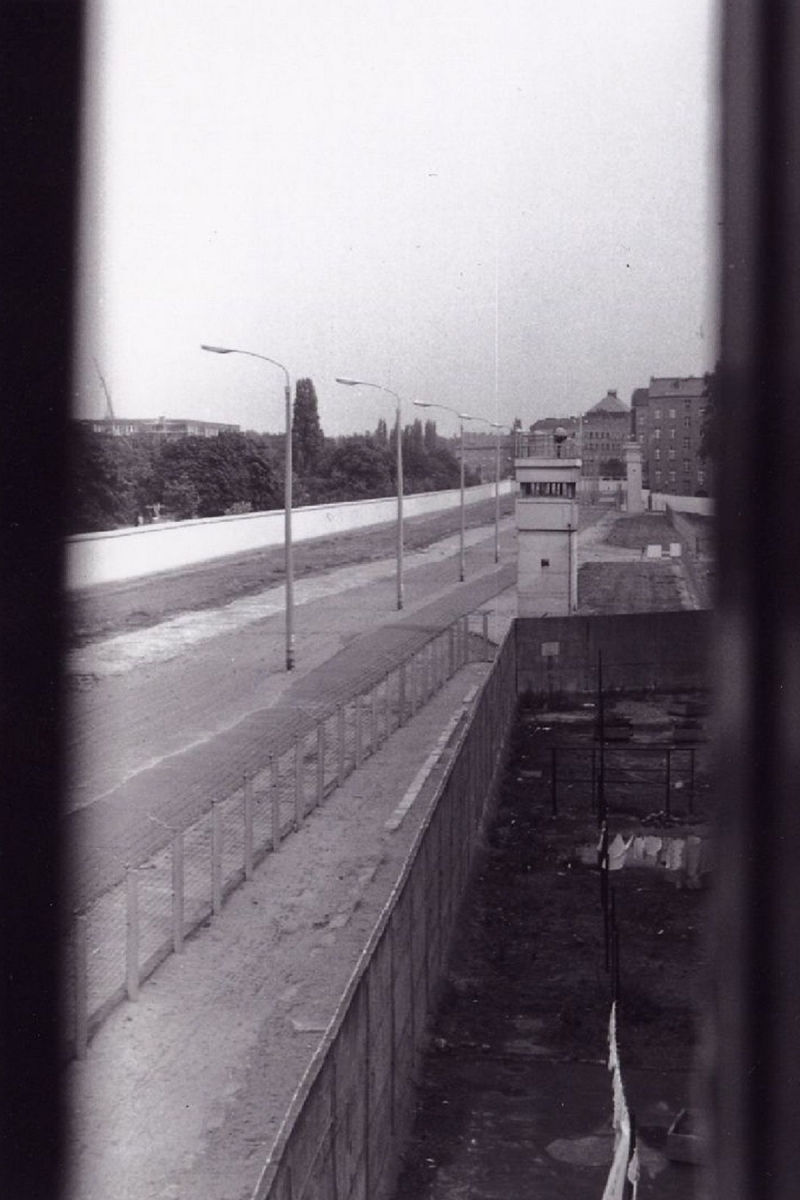Border strip
In front of you stands the inner wall that faced East Berlin. Following the construction of the Berlin Wall on August 13, 1961, East Germany continually expanded the border grounds. The inner wall was added in the 1970s. An expansive border strip was created with two walls, one facing West Berlin and one facing East Berlin. The border developed over time from a single wall to a brightly lit border strip.

Graphic of the construction of the Berlin Wall in 1983. © CC BY-SA 3.0, Foto: Ralf Roletschek, https://commons.wikimedia.org/w/index.php?curid=9804727
If you approach the inner wall, you can look through the slits and view the former border strip. These openings did not exist during the time of division. They were added later. The relics of the original border fortifications that you see here are now part of a monument that was officially dedicated on August 13, 1998. The memorial commemorates the division of Berlin and the victims of communist tyranny.
During the time of division, the border grounds were heavily guarded. Border soldiers were responsible for enforcing East Germany’s border security at the Wall. If they were otherwise unable to prevent an escape, they were expected to shoot at the innocent refugees, most of whom were unarmed. They were also required to monitor the residents living within the border area. The guards were stationed in the watchtowers and patrolled the border strip.

Two border guards on a motorcycle patrol the border strip. © Stiftung Berliner Mauer, Foto: Hans-Peter Stiebing

M. G. experienced November 9, 1989 as a border guard. He was on night duty at Gartenstrasse and Ackerstrasse that evening. He had been drafted into military service that same year and was called up to the border troops at the Berlin Wall. He was discharged early on January 30, 1990.

Michael Kretschmar was drafted into military service in the GDR and did his border service at Bernauer Strasse, among other places.
From the viewing platform at the top of the Documentation Center, you have a good view of the entire border strip. It is located across the street from the monument. From there, you can see the monument from above.

View of the Wall from West Berlin on Bernauer Strasse in April 1981. © ELAB, Archiv der Versöhnungsgemeinde, Foto: Conrad Bicker
Secret photos of the border strip
Christine Bartels secretly took photos of the border strip from her apartment. The photos are rare documents of the strictly guarded border installations taken by citizens on the eastern side. Photographing the border strip was strictly forbidden.
Christine Bartels talks about her forbidden photos of the border strip. The interview can also be seen in the exhibition The Berlin Wall. A World Divided. © Stiftung Berliner Mauer 2023




